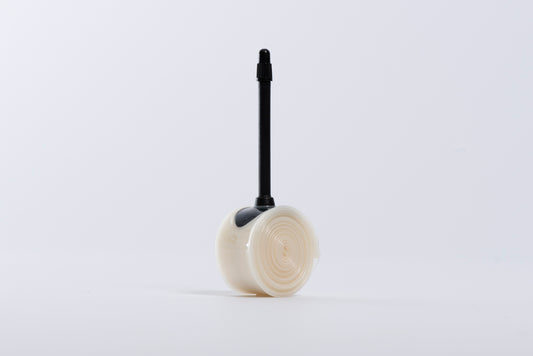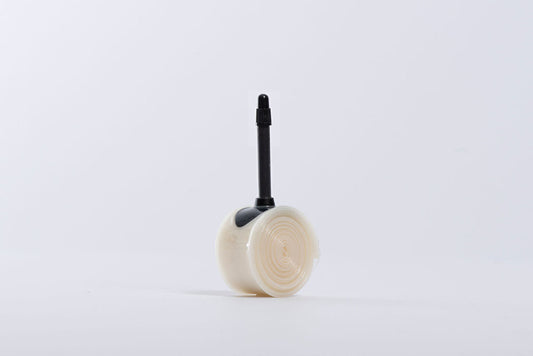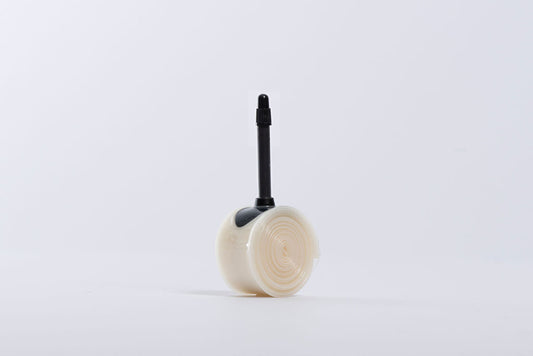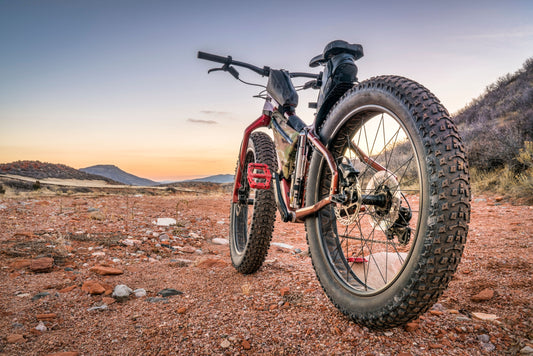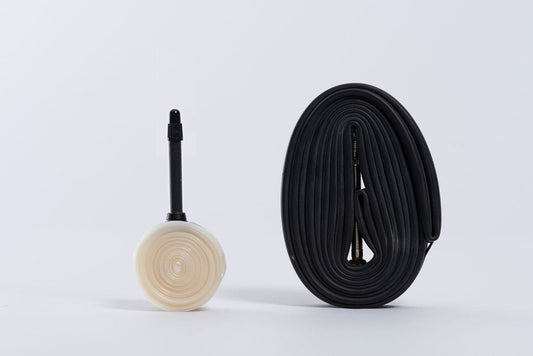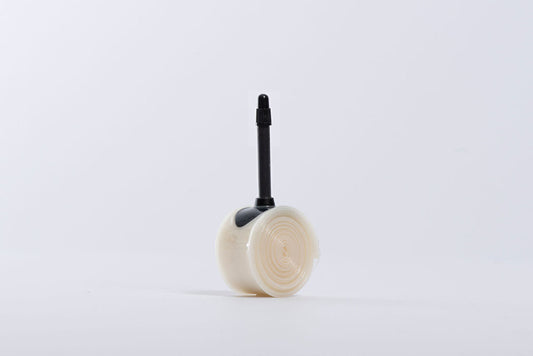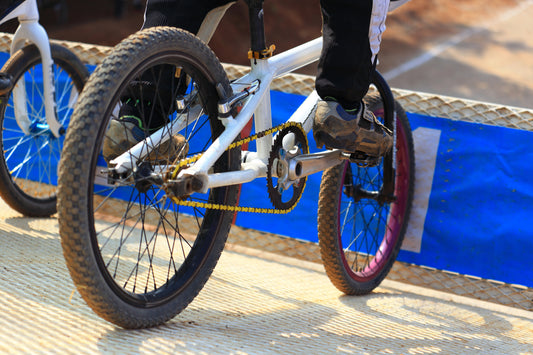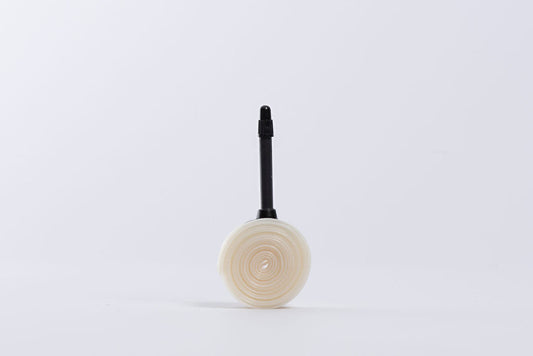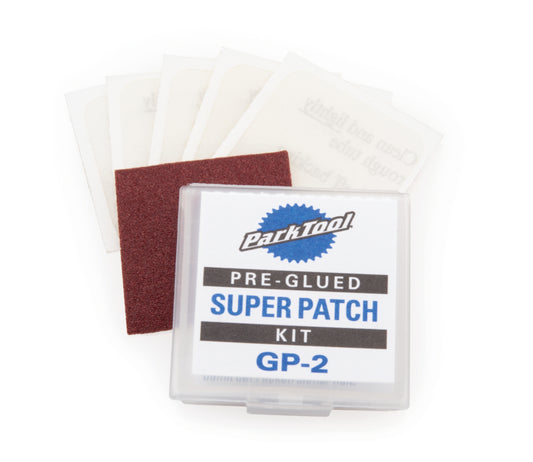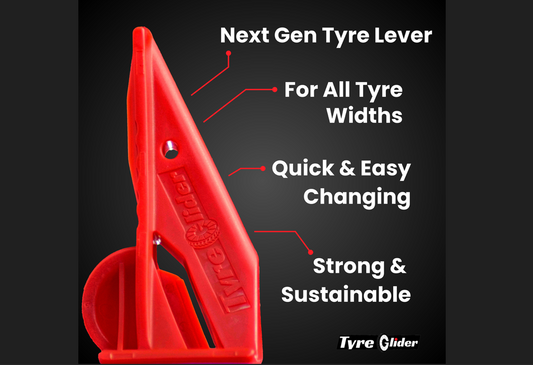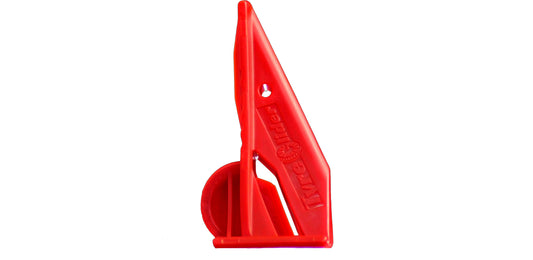Butyl has been the standard for inner tubes for decades and is the choice for many cyclists. What a lot of riders don’t know is they have another option for an inner tube and spoiler. It's revolutionary!
TPU inner tubes are an incredible replacement for butyl rubber tubes, but we are often asked, “What is the difference between TPU and butyl inner tubes?” Well, there’s a lot to speak about because although they do the same job, they are completely different from one another.
In this article, we will be telling you everything you need to know about both butyl and TPU tubes, from what they are to how they compare. We are going to be discussing:
- What Are TPU Inner Tubes?
- What Are Butyl Inner Tubes?
- Comparing TPU And Butyl Inner Tubes
- Which Is Best?

What Are TPU Inner Tubes?
TPU is short for Thermoplastic Polyurethane. It’s a type of plastic that can be manufactured for many purposes. You will see TPU in hospital equipment, on cars, and in many day-to-day household items.
The beauty of TPU is that it can be made rigid and flexible, is incredibly strong, is very resilient to chemicals, and lasts for years and years. As far as manufacturing goes, it’s a super material, so why not make inner tubes from them?
What Are Butyl Inner Tubes?
Butyl rubber is also known as isobutylene-isoprene rubber. It is a rubber that is very flexible, excellent for its impermeability to liquids and gasses, and is very resistant to heat. It’s very cheap to manufacture and can be easily repaired if required.
Butyl rubber is an ideal material for inner tubes. Not only is it very flexible and excellent at holding air, but because you generally get through many inner tubes as a cyclist, they are very accessible and easy to replace.

Comparing TPU And Butyl Inner Tubes
Now for the exciting part, let's compare these inner tubes against each other. We have picked all real-world differences so you know exactly what to expect.
Weight
The first and probably the biggest difference you will notice is weight. Having a lighter bike is one thing, but shaving weight off your wheelset is another. TPU tubes come in around 40g, which is incredibly light, whereas butyl inner tubes are roughly 180g. That’s a saving of roughly 140g per wheel!
As an upgrade, dropping nearly 300g off your wheels will go a long way. That’s the same weight difference between a budget wheelset and a mid to high-level wheelset. Although there’s some light butyl tubes on the market they are nowhere near TPU weights. Upgrading your inner tubes is a cheap and effective way to drop weight fast.
Rolling Resistance
If you’re looking to take your cycling to the next level and are craving performance, then a good way of doing that is by reducing the bike's rolling resistance. Although the best way to do this is to go for performance tires, the inner tubes also make a very big difference.
TPU tubes, compared to standard butyl tubes, produce much less rolling resistance. The relationship between the tire and the tube with TPU offers a much better connection, and this is noticeable by around 5 watts, which can make a big difference over a race.

Durability
Next, we have durability. Many people think when it comes to punctures, the inner tubes don’t matter, but they really do. If you look at your tire closely, there are often times when you will see flint or thorns in, but the tire still holds air. This is the inner tube stopping the air from going out by being durable.
TPU is very durable and surprisingly has the ability to withstand debris much better than butyl inner tubes. As a last line of defense, a stronger inner tube could be the difference between a puncture or an uninterrupted ride home. A standard butyl tube can often suffer with durability.
Cost
Then we have cost, and there’s a big difference between TPU and butyl. Our TPU tubes cost around $US25, and butyl tubes come in at $US8. Although the butyl option is cheaper, it isn’t necessarily the best option. For performance, TPU offers something very special and is certainly worth the extra cost. With regular clincher tires being cheaper than tubeless a TPU upgrade can also be cheaper than going tubeless, in terms of total cost.
Longevity
When it comes to inner tubes, you want them to last. The fewer inner tubes you have to use, the better. A butyl tube will typically have a shorter lifespan, over a few years, you can find them breaking down and, in some cases, popping due to getting weaker.
When TPU is much more resilient, it’s built to last much longer, and although thinner and much lighter, it doesn’t age the same way that butyl does. It’s important to understand both are repairable. Park tool GP2 patches offer a quick and easy permanent fix for both types of tubes.
It’s also good to mention that TPU inner tubes are much easier to recycle compared to butyl inner tubes. Recycled TPU can be turned into medical goods, automotive parts, or even another TPU inner tube.

Temperature Sensitivity
Another factor when it comes to butyl vs TPU inner tube is temperature sensitivity. The pressure in butyl inner tubes can be very sensitive when it comes to changing temperatures, while TPU doesn’t share this characteristic and can hold pressures much better.
Which Is Best?
Both butyl and TPU have a place when it comes to inner tubes. They both provide a great service, and you'll have a great experience riding with them both.
If you are looking for performance and reliability, then you are going to want to be on TPU inner tubes. They are lighter, have much less rolling resistance, and are made much stronger in case anything gets past your tire.
If you are looking to spend less money you should use butyl. It’s not going to offer the performance and reliability of a TPU inner tube, but it is going to do the job and save you money.

A Final Note
TPU inner tubes are amazing, and although they cost a little more, they can improve your cycling experience and boost performance significantly. Butyl has been used for many years, and it’s what many people use, thinking it’s the standard when there are other options for tube materials such as TPU and latex inner tubes.
Thanks for taking the time to read our article. If you enjoyed this, you will want to check out some of our other articles about TPU butyl and latex tube options. Here’s TPU Vs Latex Tubes, TPU Pros and Cons, and Is TPU The New Road Bike Inner Tube?


